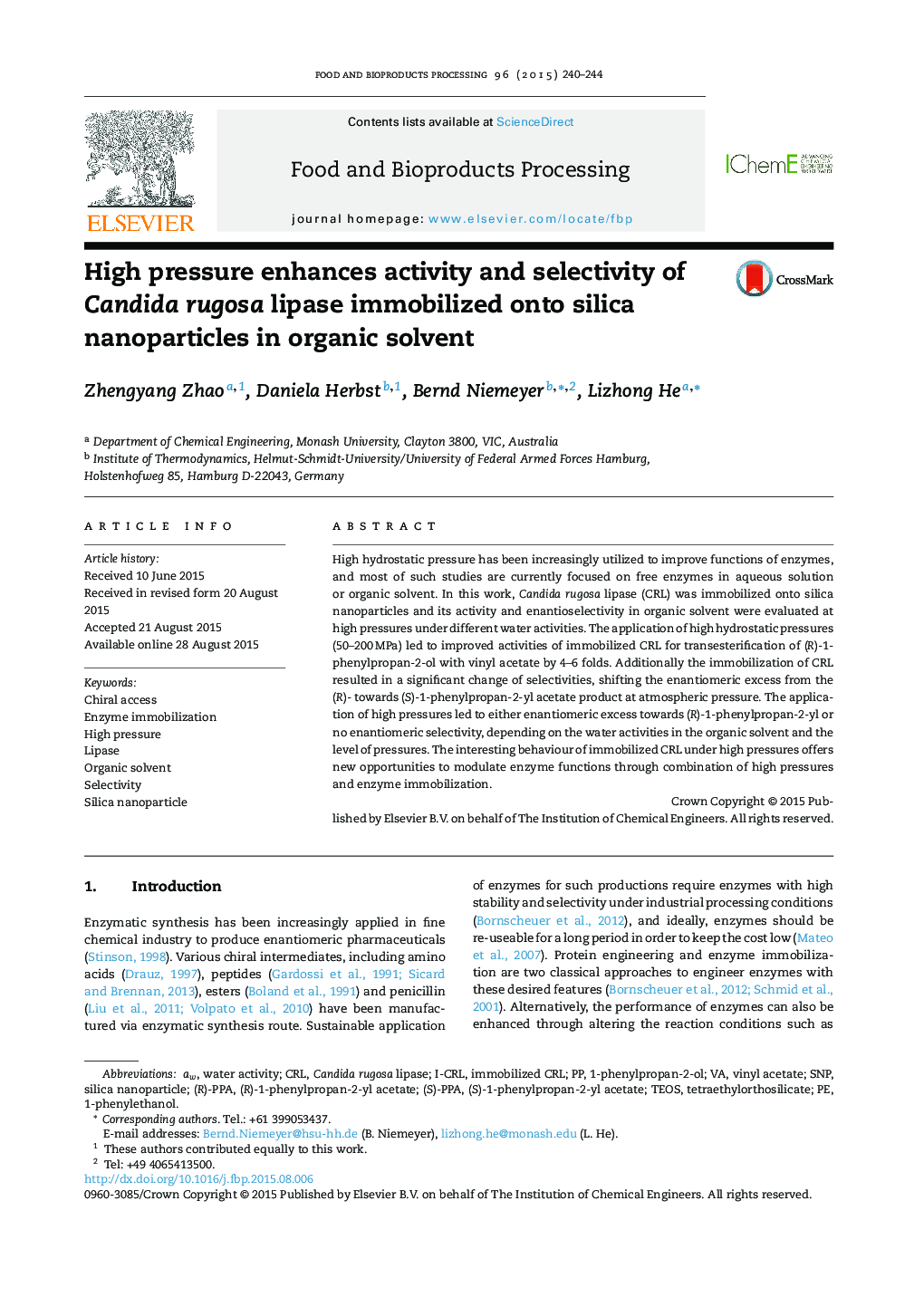| Article ID | Journal | Published Year | Pages | File Type |
|---|---|---|---|---|
| 18840 | Food and Bioproducts Processing | 2015 | 5 Pages |
•Lipase was successfully immobilized on solid silica nanospheres.•High hydrostatic pressures (50–200 MPa) improved activities of immobilized lipase by 4–6 folds.•The immobilization of lipase significantly change its enantiomeric selectivity.•The level of pressures and the water activity determine enantiomeric excess at high pressures.
High hydrostatic pressure has been increasingly utilized to improve functions of enzymes, and most of such studies are currently focused on free enzymes in aqueous solution or organic solvent. In this work, Candida rugosa lipase (CRL) was immobilized onto silica nanoparticles and its activity and enantioselectivity in organic solvent were evaluated at high pressures under different water activities. The application of high hydrostatic pressures (50–200 MPa) led to improved activities of immobilized CRL for transesterification of (R)-1-phenylpropan-2-ol with vinyl acetate by 4–6 folds. Additionally the immobilization of CRL resulted in a significant change of selectivities, shifting the enantiomeric excess from the (R)- towards (S)-1-phenylpropan-2-yl acetate product at atmospheric pressure. The application of high pressures led to either enantiomeric excess towards (R)-1-phenylpropan-2-yl or no enantiomeric selectivity, depending on the water activities in the organic solvent and the level of pressures. The interesting behaviour of immobilized CRL under high pressures offers new opportunities to modulate enzyme functions through combination of high pressures and enzyme immobilization.
Graphical abstractFigure optionsDownload full-size imageDownload high-quality image (159 K)Download as PowerPoint slide
